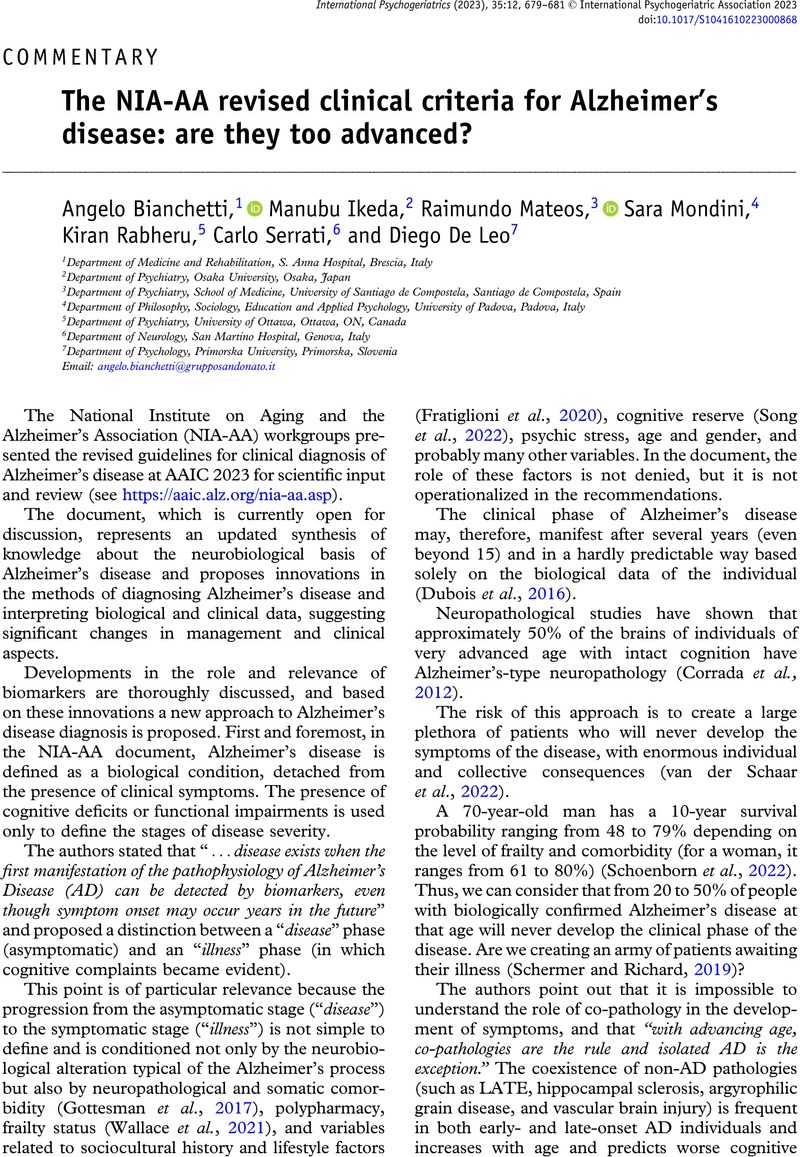Crossref Citations
This article has been cited by the following publications. This list is generated based on data provided by Crossref.
Joshi, Arpita
Giorgi, Federico Manuel
and
Sanna, Pietro Paolo
2024.
Transcriptional Patterns in Stages of Alzheimer's Disease Are Cell-Type–Specific and Partially Converge with the Effects of Alcohol Use Disorder in Humans.
eneuro,
Vol. 11,
Issue. 10,
p.
ENEURO.0118-24.2024.
Tavares-Júnior, José Wagner Leonel
Ciurleo, Gabriella Cunha Vieira
Feitosa, Esther de Alencar Araripe Falcão
Oriá, Reinaldo B.
and
Braga-Neto, Pedro
2024.
The Clinical Aspects of COVID and Alzheimer’s Disease: A Round-Up of Where Things Stand and Are Headed.
Journal of Alzheimer’s Disease,
Vol. 99,
Issue. 4,
p.
1159.
Gong, ChengBing
Song, WenTing
Zhu, ZhengYang
Yang, Dan
Zhao, Xiang
Xu, Yun
and
Zhao, Hui
2025.
APOE
ε4 influences the dynamic functional connectivity variability and cognitive performance in Alzheimer's disease
.
Journal of Alzheimer’s Disease,
Vol. 104,
Issue. 4,
p.
1103.
Wang, Yan
Li, Fangyu
Qin, Qi
Li, Tingting
Wang, Qi
Li, Yan
Li, Ying
and
Jia, Jianping
2025.
Influence of APOE ε4 on performance of CSF biomarkers in differentiating clinical Alzheimer's disease.
The Journal of Prevention of Alzheimer's Disease,
Vol. 12,
Issue. 4,
p.
100065.



